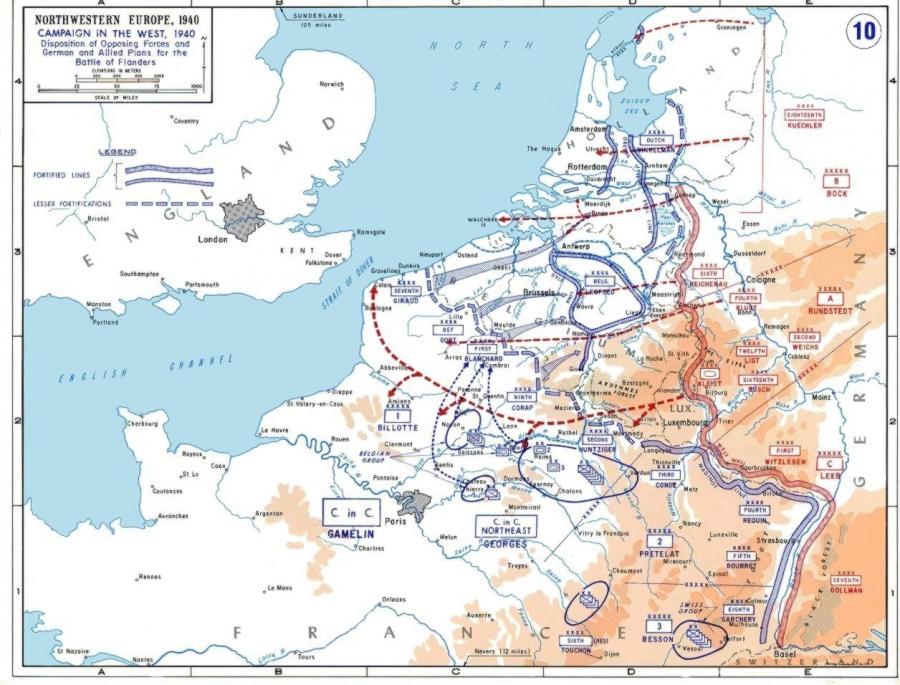Northwest Europe Spring 1940: Allied Defense vs. German Invasion Plan
Contrary to popular perception the Allies chose a defensive deployment scheme that actually was fairly aggressive. Given the Maginot line's defensive strength and the unfavorable terrain lining the Franco-German border; the allies believed a German offensive needed to come through northern Belgium. The Allies believed that on the Belgian plains the British Expeditionary Force (BEF) and French motorized armies could meet and defeat the German army. The Allied Commander in Chief, French General Maurice Gamelin based his strategy on using the combined strength provided by Belgian defensive fortifications supported with French reinforcements, most notably in artillery, at the Dyle River. In early 1940 Gamelin modified the Allied defensive plan to take into account a German attack including the Netherlands. Gamelin's plan sought to carry the fight as far to the east as possible. The Allied defensive plan however labored under the burden brought by two problems. First, the Allies presupposed German planners regarded the heavily wooded and hilly Ardennes in southern Belgium as impenetrable. Therefore, the Allied
command assigned inadequate forces to the Ardennes for even defensive blocking efforts. The second problem underlying allied defensive plans related to the first problem. Allied defensive plans were predicated on Belgian defensive fortifications buying enough time for the advancing Allied armies to arrive at the front. All in all, it was not a bad plan; it just had the misfortune of facing a better plan; one more successfully married to a tradition for waging war perfectly designed for a Western European application.
General Erich von Manstein's plan, having replaced the unoriginal and unimaginative OKH plan for defeating France, coupled simplicity with deception and concentrated strength. It featured strong German armies attacking into the Netherlands, drawing allied forces to meet what appeared as the German army's main attack axis. At the same time the primary strike force, including the strongest armored concentrations, attacked through the thinly defended Ardennes and penetrated deep behind the Allied forces advancing into Northern Belgium and the Netherlands. Upon breaking out of the Ardennes the German armor would turn northwest, driving to the English Channel, and trapping the Belgian army, Dutch army, the BEF, and France's best armies in one huge pocket. Thus, Manstein's plan met the essential elements underlying German army doctrine since Prussian
successes in the 19th Century; in seeking a decisive blow.
Map Courtesy of: Department of History, United States Military Academy


